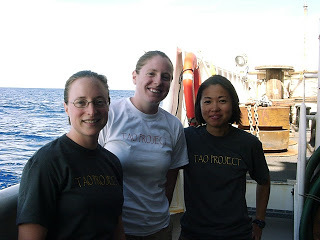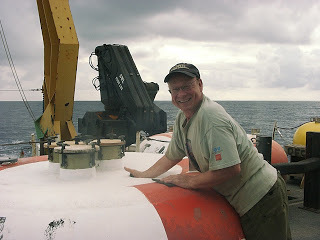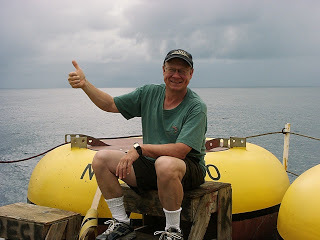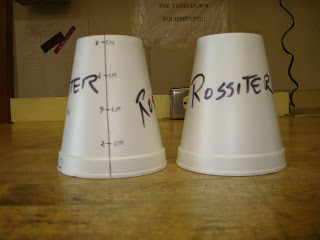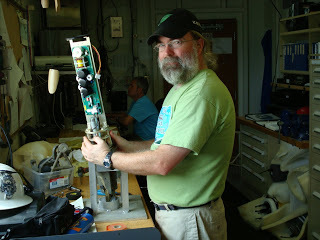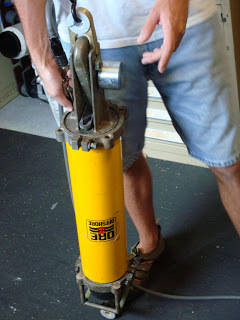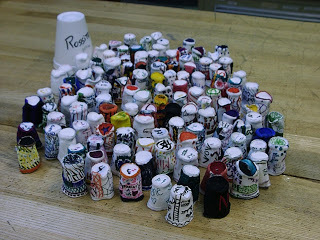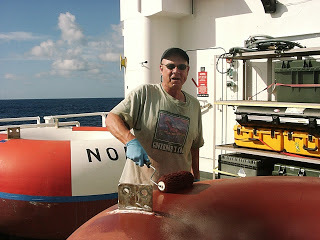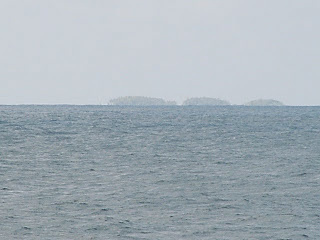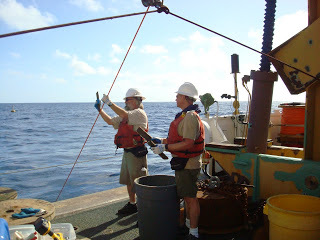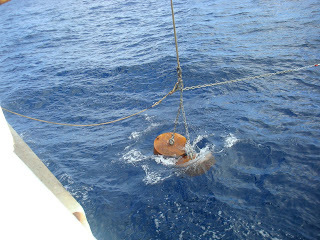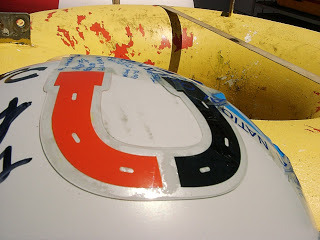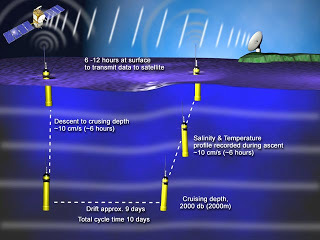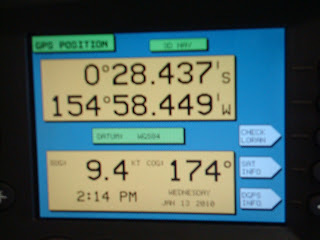NOAA Teacher at Sea
Wes Struble
Aboard NOAA Ship Ronald H. Brown
February 15 – March 5, 2012
Mission: Western Boundary Time Series
Geographical Area: Sub-Tropical Atlantic, off the Coast of the Bahamas
Date: February 27, 2012
Weather Data from the Bridge
Position: 26 degrees 31 minutes North Latitude & 76 degrees 48 minutes West Longitude / 9 miles east of the Bahamas
Windspeed: 8 knots
Wind Direction: East by Southeast
Air Temperature: 24.8 deg C / 76.5 deg F
Water Temperature: 24.2 deg C / 75.5 deg F
Atm Pressure: 1025 mb
Water Depth: 3830 meters / 12,770 feet
Cloud Cover: Approximately 60%
Cloud Type: Some altostratus and cumulostratus
Science/Technology Log:
The temperature has become quite warm and it has been a delight to walk around the deck in the sunshine in a t-shirt and shorts (the current weather back home is between 10 and 20 deg F and snowing). As you can see from the photo below the weather continues to be clear with some fair weather cumulus clouds and a light breeze.

A view of the wide western Atlantic off the Ron Brown's bow from the weather deck several days after leaving the port of Charleston, SC

Removing the plastic packaging and recording the coordinates and serial number of the drifter buoy before deployment

Dr. Aurelie Duchez tosses the drifter over the stern of the Ron Brown. This cruise is a continuation of a long period of study (over 30 years) of the Gulf Stream and the Western Boundary currents in and around the region of Florida and the Bahamas. This region is of particular interest because of the impact these currents have on the weather and climate patterns of the northeastern North America and Northern Europe. The Gulf Stream current helps transport large amounts of heat energy derived from the equatorial Atlantic to the northern latitudes of America and Europe. An image of the Gulf Stream current from space - NASA photo. The Gulf Stream is the orange colored current that passes on the east coast of Florida and flows north along the eastern seaboard of the US
This phenomenon helps to moderate the climates of those areas by producing milder temperatures than would normally occur at these latitudes. Changes in the characteristics of these currents could potentially have a profound affect on the climates of these regions and it would be of particular interest to understand in detail the nature and interaction of these mobile bodies of water. To study these currents a combination of techniques have been employed. We should all be familiar with the concept of induction – the process of producing a current in a conductor by moving it through an electromagnetic field. This was one of the more important discoveries of Michael Faraday and is one for which we should be very grateful since most of our modern world depends upon the application of this scientific discovery.
As an example think of what modern life would be like without electric motors or generators. Well, it just so happens there exist old communications cables on the seafloor under these very currents between south Florida and the Bahamas. These cables are affected by a combination of the earth’s magnetic field and the motion of the seawater (a solution composed primarily of dissolved ions, charged particles, of Na+ and Cl–). This combination of charges, motion, and the earth’s magnetic field causes a weak electrical current to be induced in the cable – a current which researchers have been able to measure.

A schematic showings the induction of an electric current in the underwater cable by motion of the sea water current (NOAA Image)
The electric current in the cable can be related mathematically to the strength of the ocean currents flowing over them. In addition to the data produced by the cable, the NOAA scientists are also deploying moored buoys below the surface that measure the characteristics of the seawater (temperature, density, etc) and use an Acoustic Doppler array to measure the relative motion of the current.

ADCP (Acoustic Doppler Current Profiler) and two other types of buoys - image from Grand Valley State University









